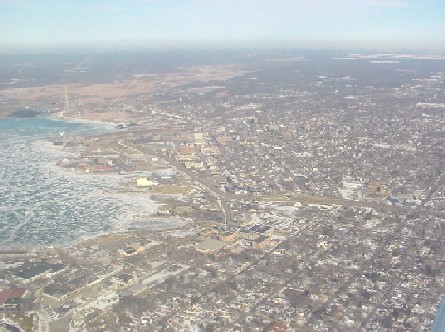Sustainable Muskegon Metro - Background Information

Developing a Sustainable Strategy for the City of
Muskegon and its Urban Area
Synopsis Background Information
Preliminary Survey Results
Additional Resources
Muskegon Area Sustainability Coalition
The City of Muskegon covers 18 square miles and is located in west Michigan on the shores of Lake Michigan. With a 2000 US Census population of 40,105, Muskegon is the largest city on the eastern shore of Lake Michigan. The City of Muskegon is included in one of the fastest growing and most prosperous economic regions in the state, the Grand Rapids- Muskegon-Holland metropolitan statistical area (MSA). It is therefore ironic that the Muskegon community has suffered from both economic and social challenges over the past four decades.
In a comparison between the City of Muskegon and Michigan as a whole, the following observations help to characterize some of the issues that need to be considered:
- Median house value is below state average
- Black population percentage is substantially above state average
- House age is above state average
- Percentage of population with a bachelors degree or higher is substantially below state average
- Homeownership rate is below state average
- Percentage of population below poverty level is substantially above state average
- Median household income is substantially below state average
In the early 1970's, the Muskegon downtown (Central Business District- CBD) was converted to a covered mall in an attempt to keep pace with the times and respond to increased interest by consumers for this type of retail experience. This change met with some early success, but the benefits were short-lived as downtown Muskegon struggled to compete with other local markets. While the area has suffered enormously as a consequence, today there is a movement underway to renovate the entire downtown, from the ground up! Grand Valley State University (GVSU) finds itself literally in the midst of this renewal and is not only a witness but a partner in the resurgence of this city. GVSU holds two key properties on either end of the downtown complex. These include, to the northeast, the Michigan Alternative and Renewable Energy Center (MAREC), and to the southwest, the Lake Michigan Center (LMC) home to the Annis Water Resources Institute (AWRI). MAREC is a 25,000 square foot state-of-the-art office building that serves as a business incubator, research facility, educational resource, and conference center. The LMC is similar in size to MAREC and is host to the area's only freshwater research institute, employing over 60 people. The facility contains classrooms, laboratories, and meeting facilities as well as docking for its research vessels.
